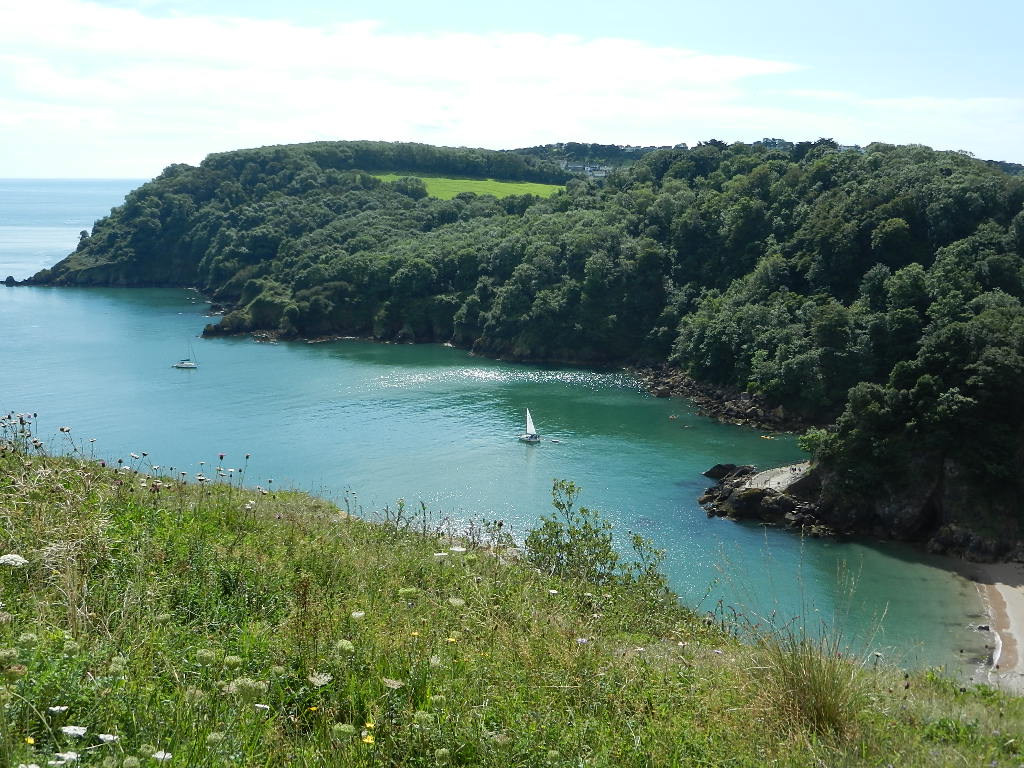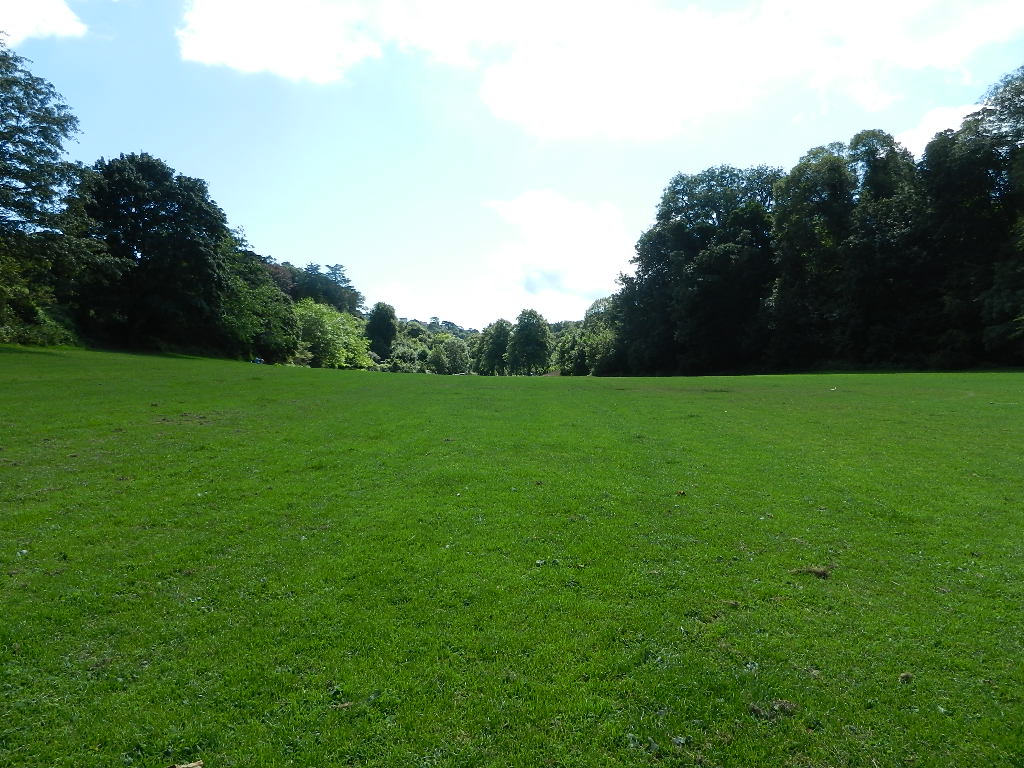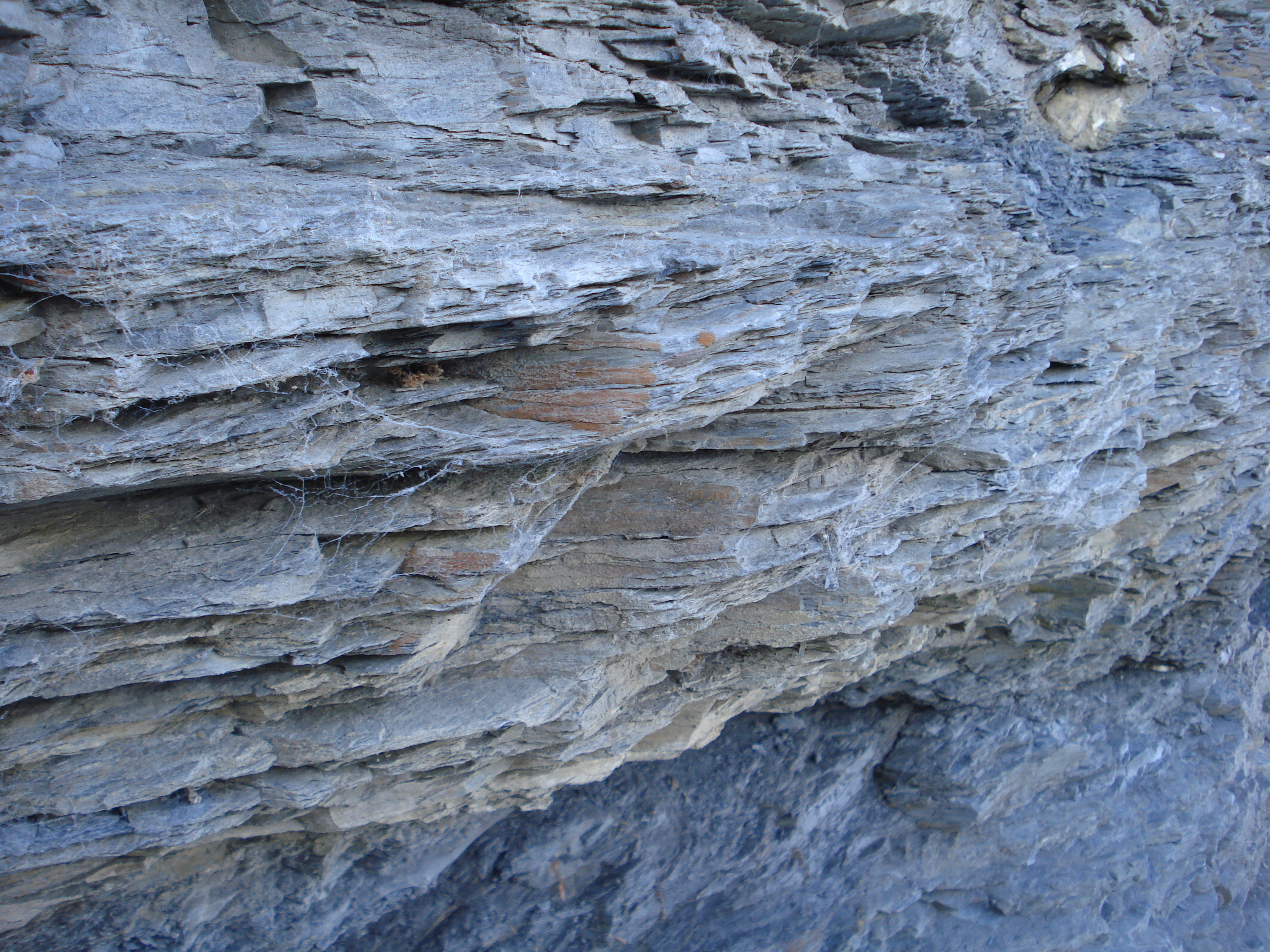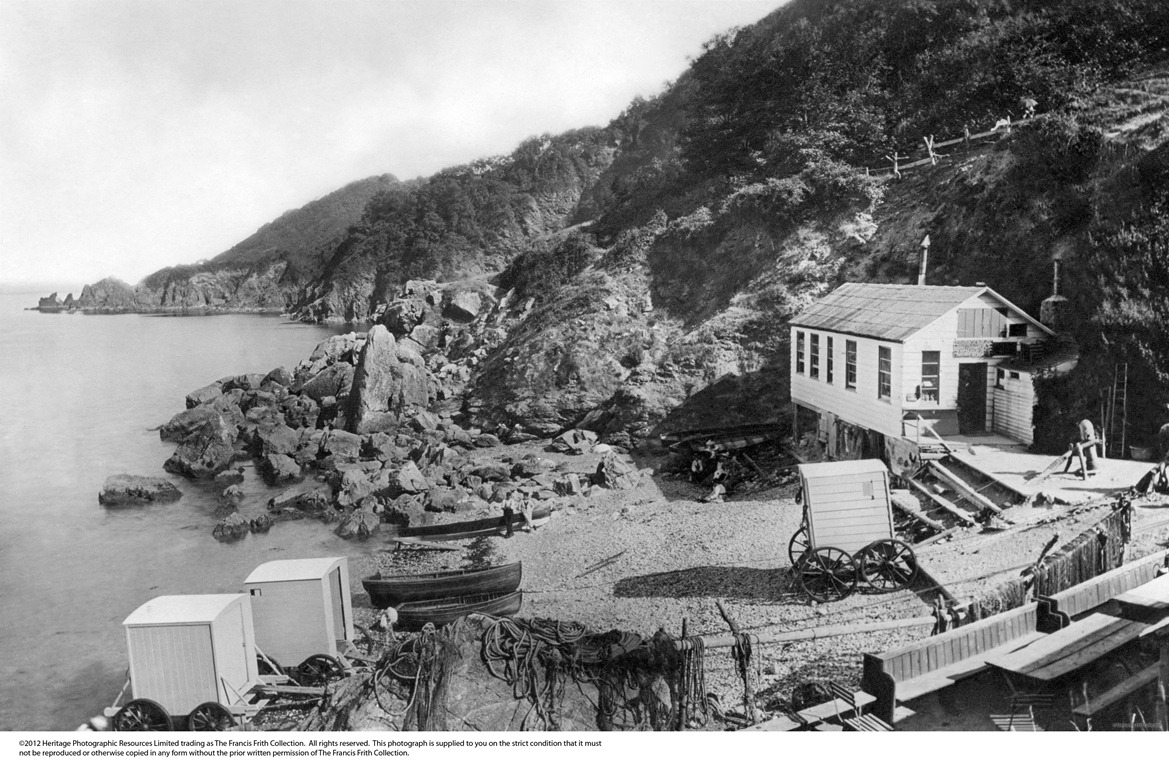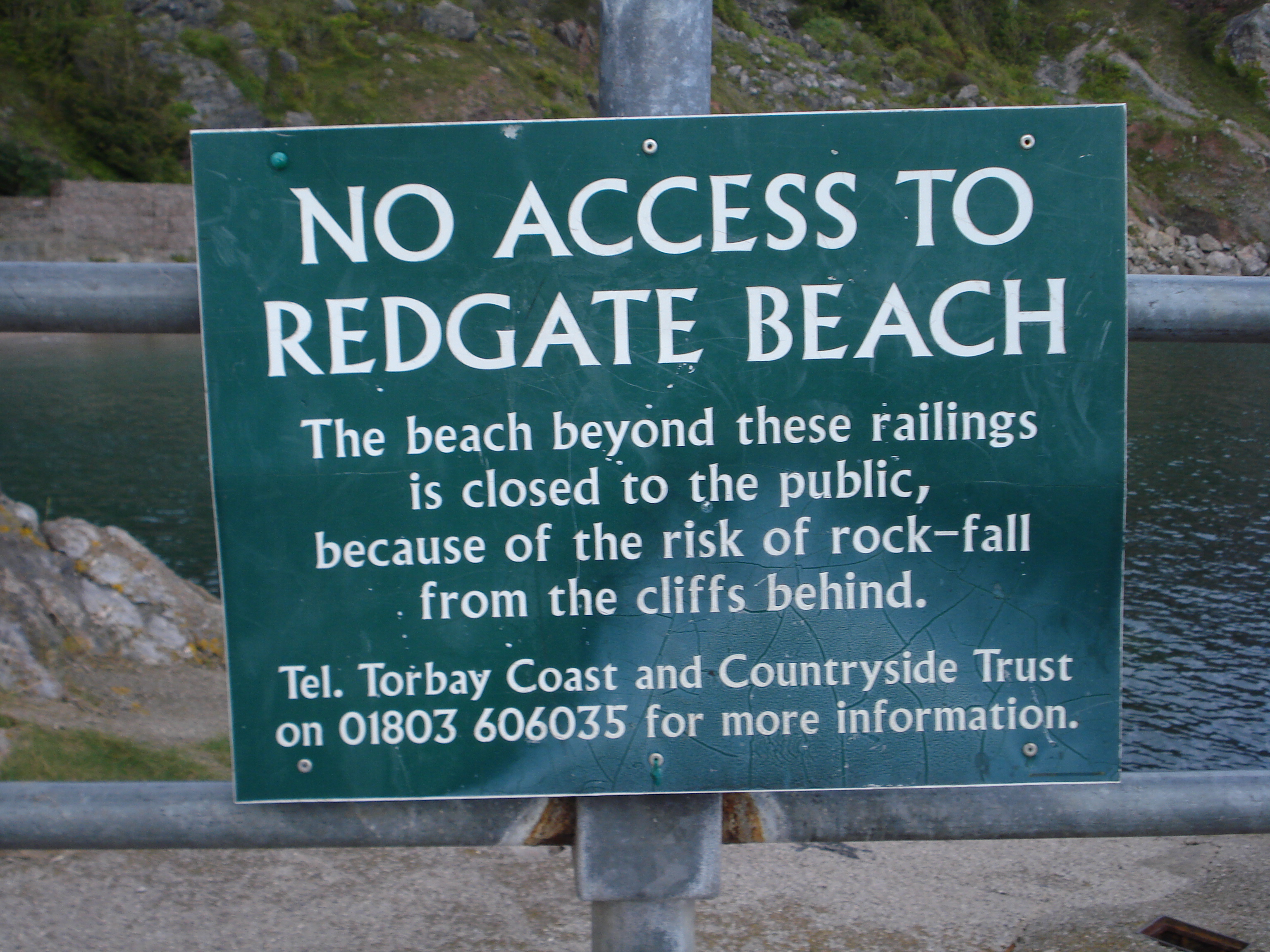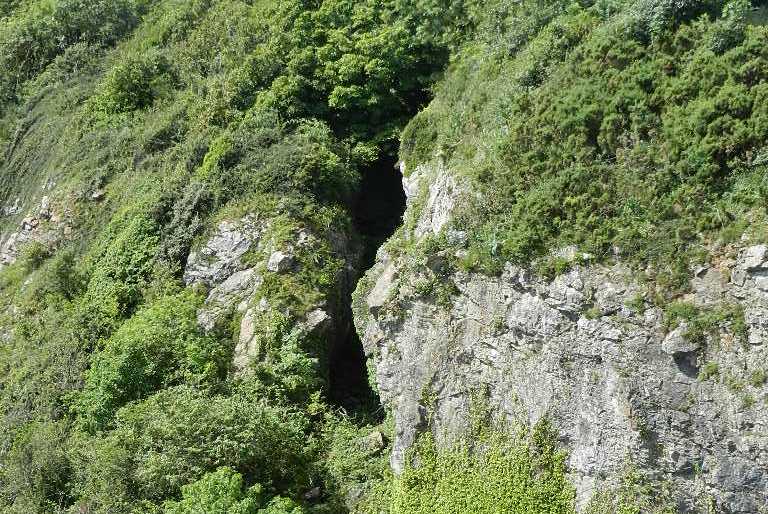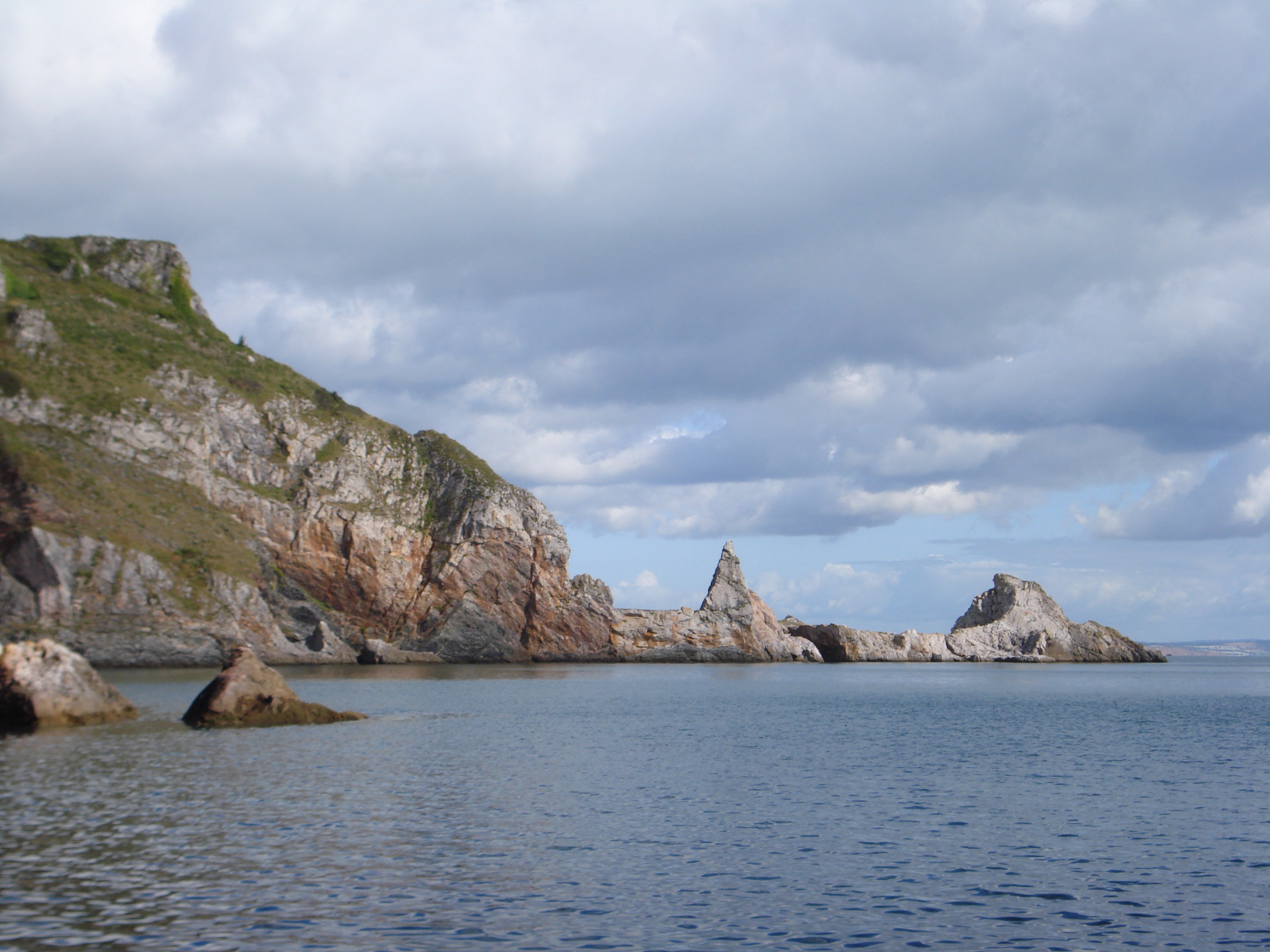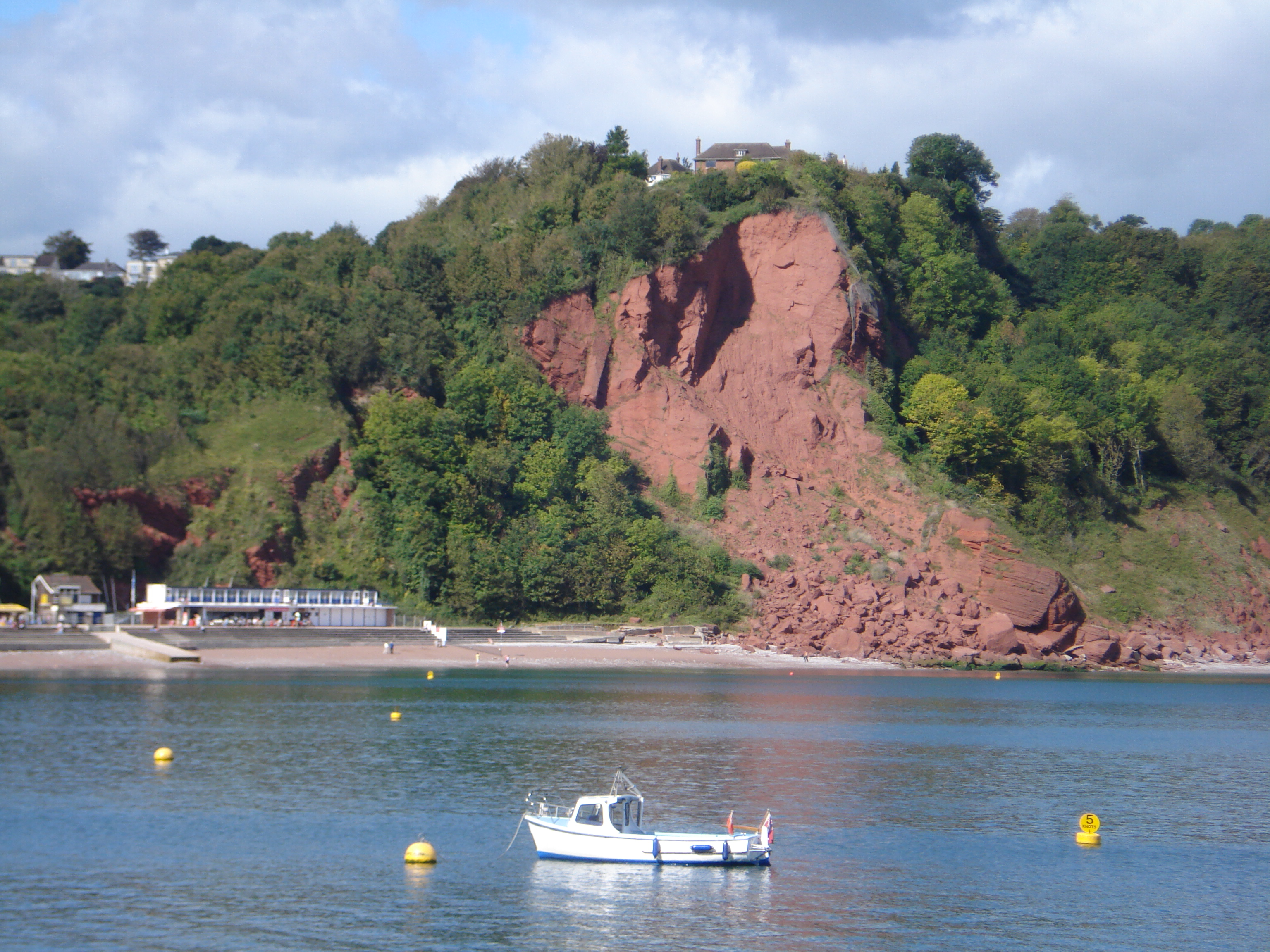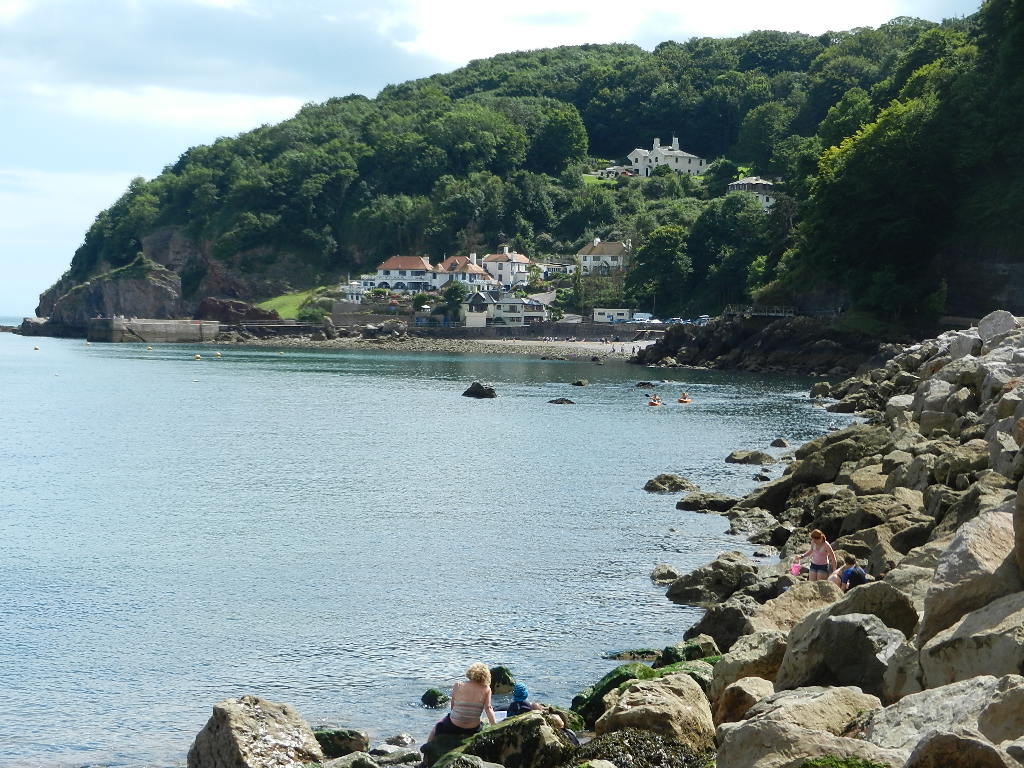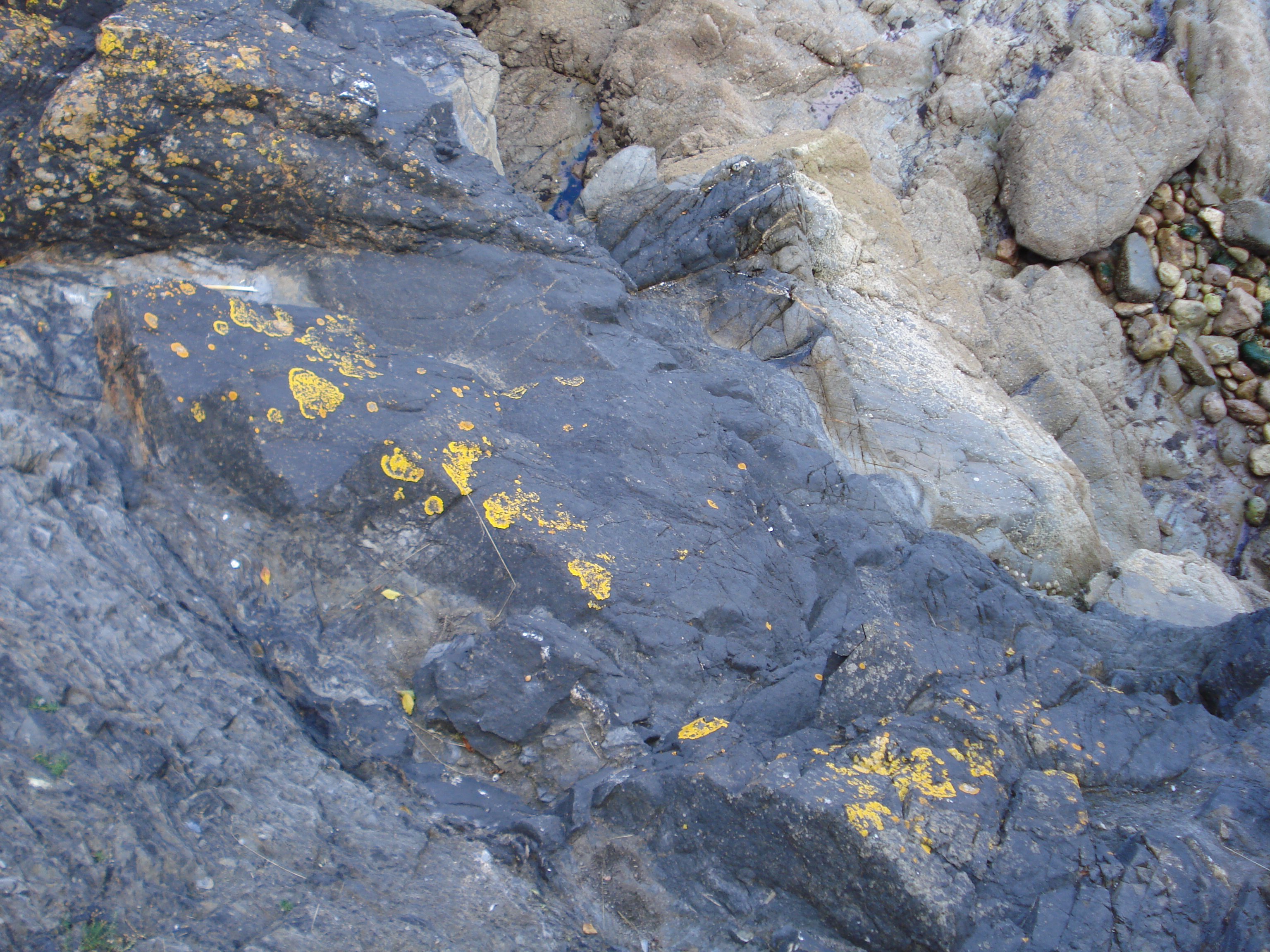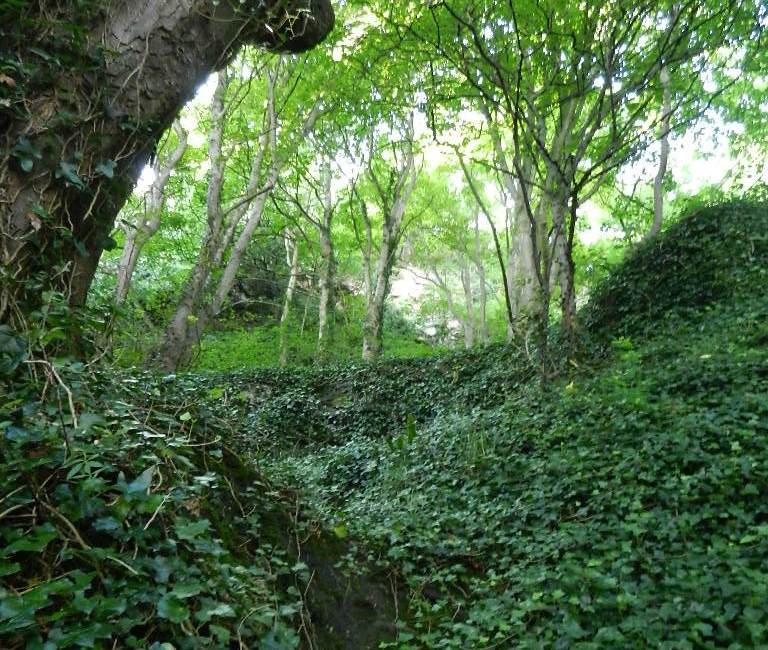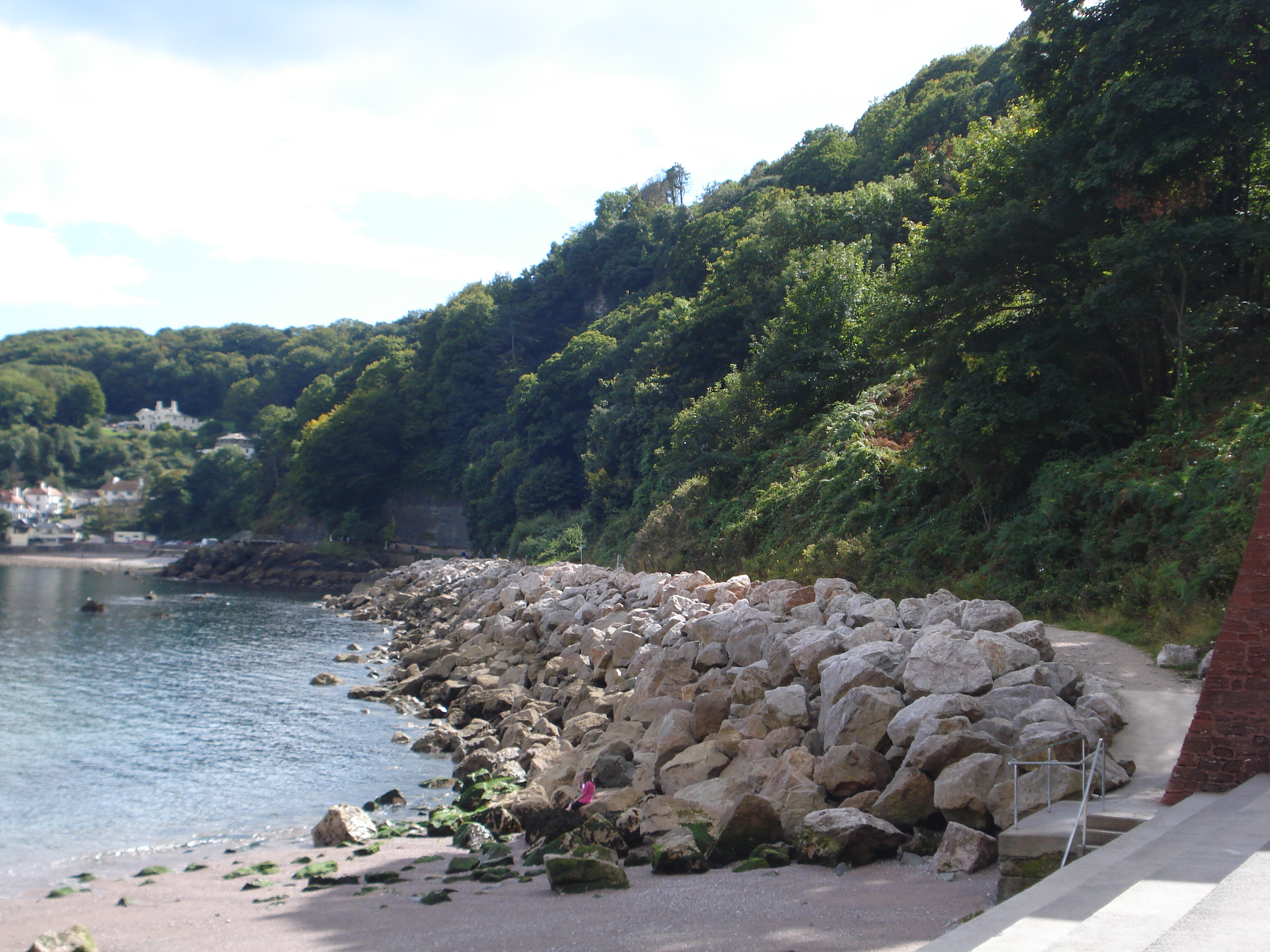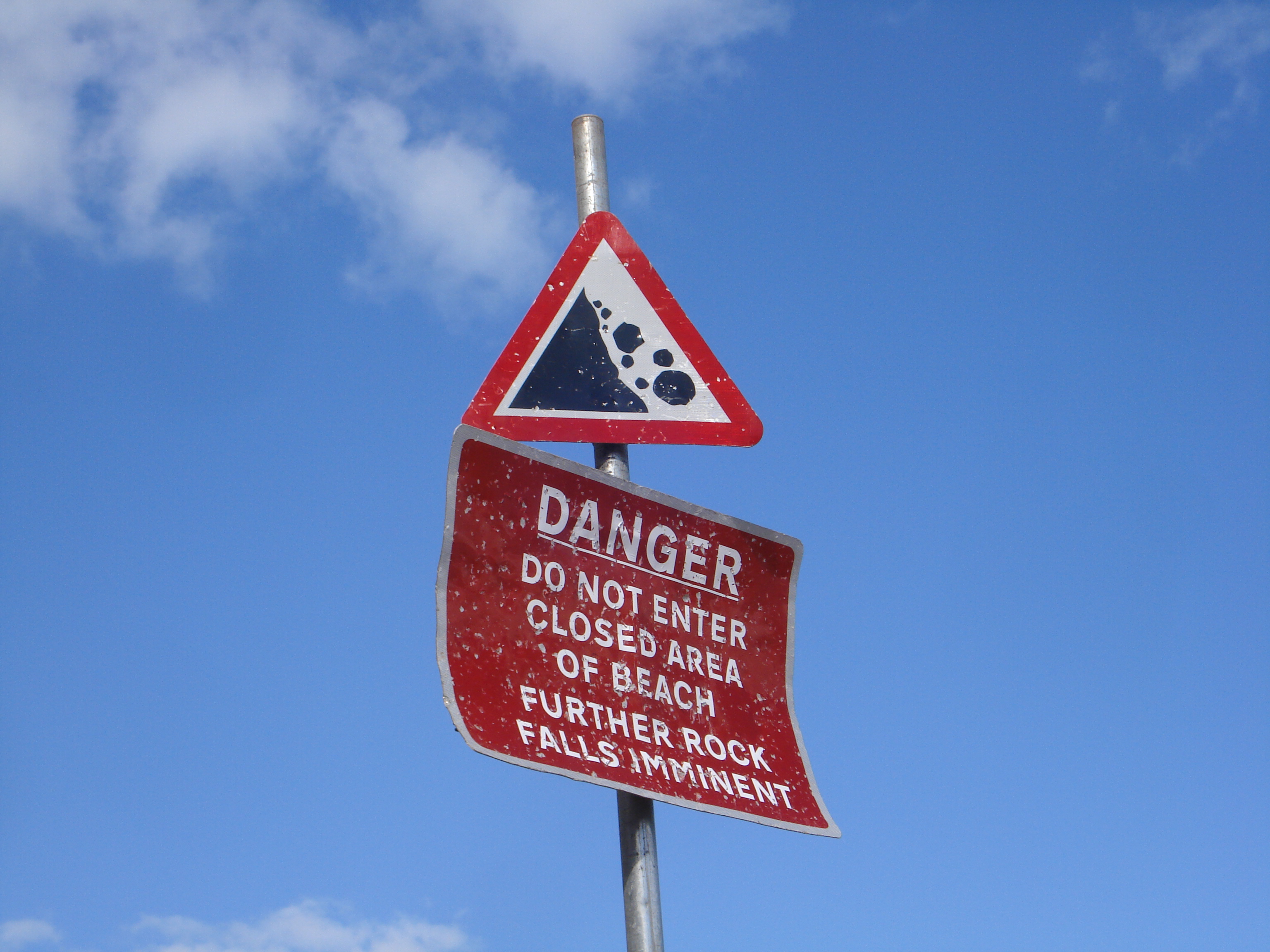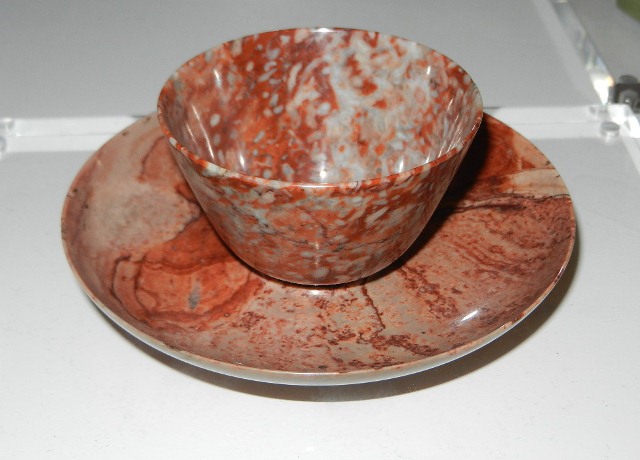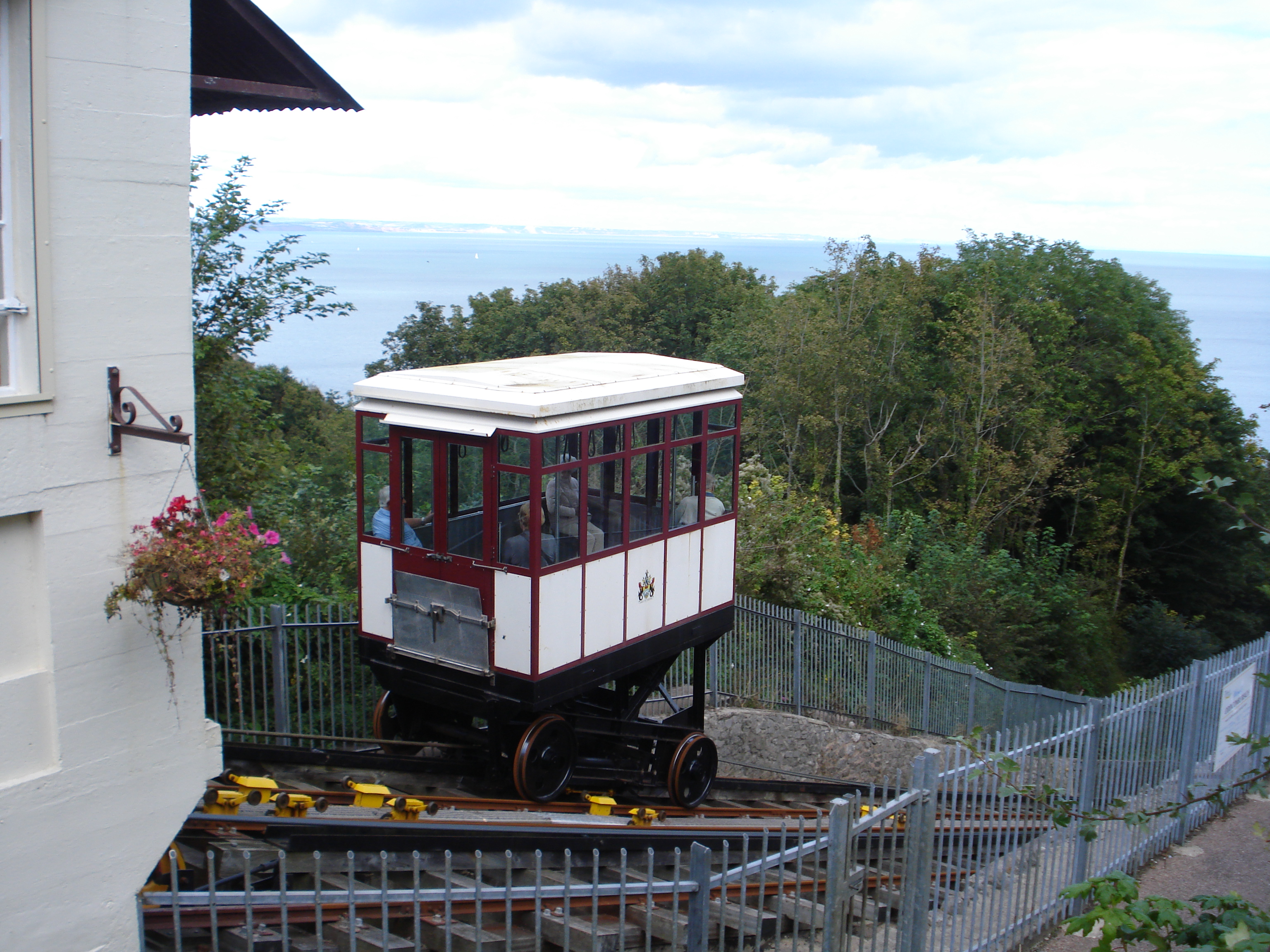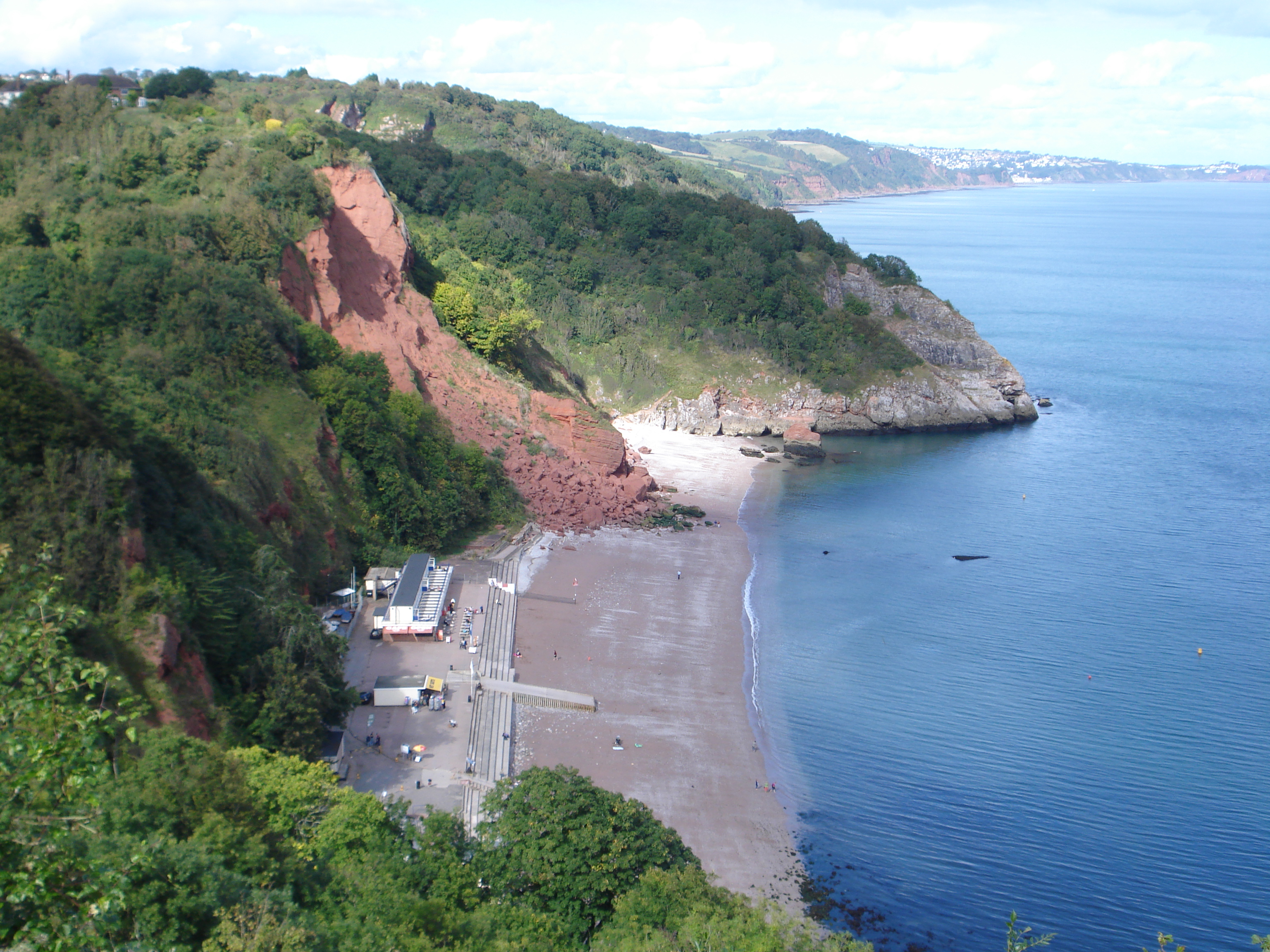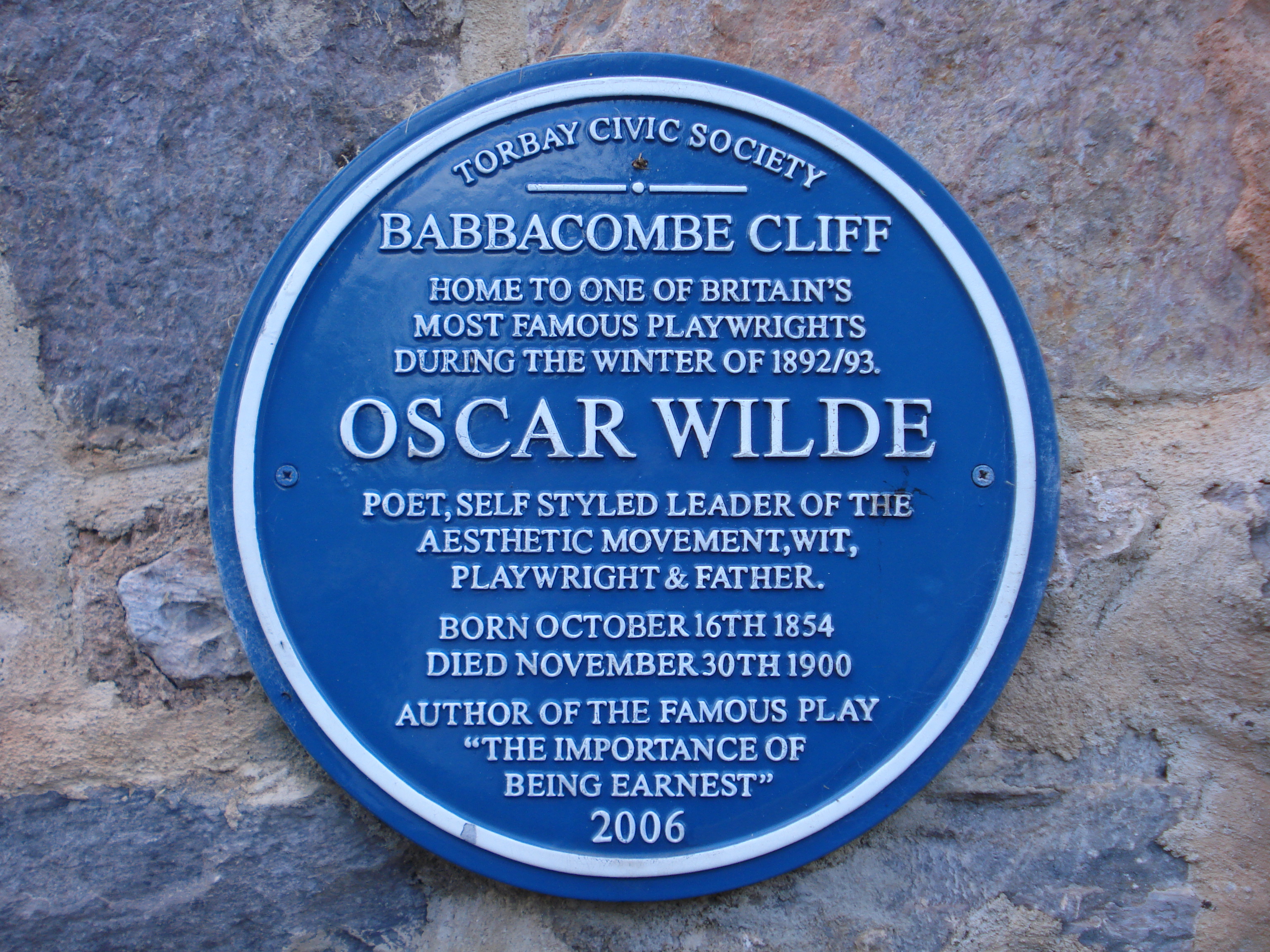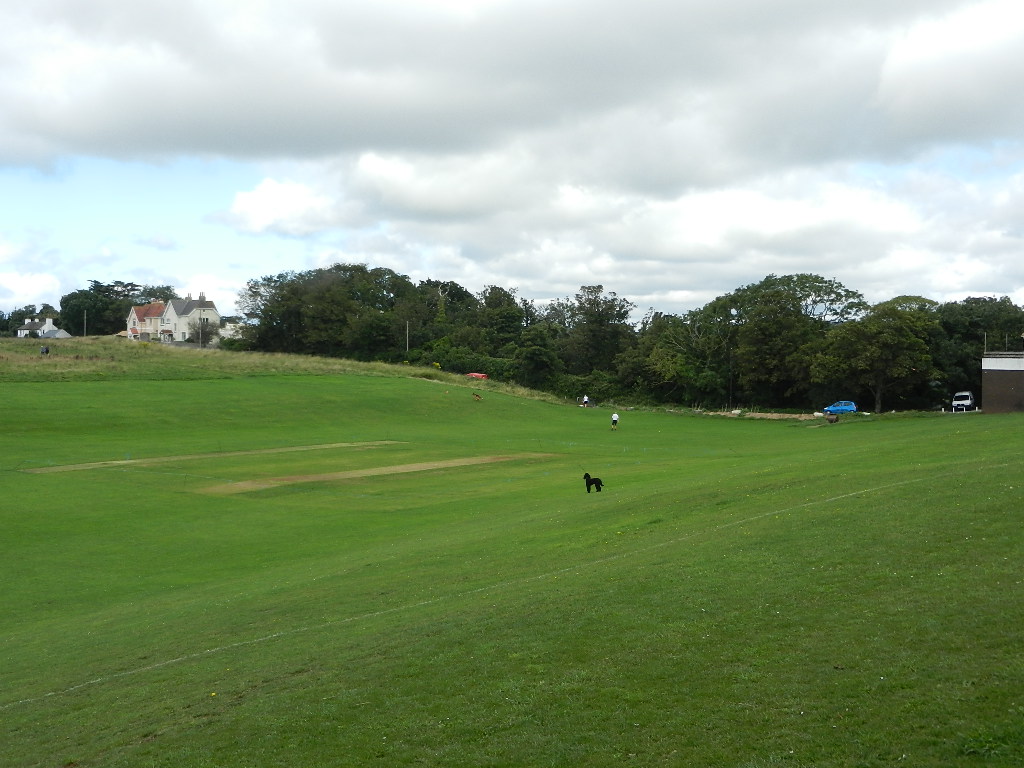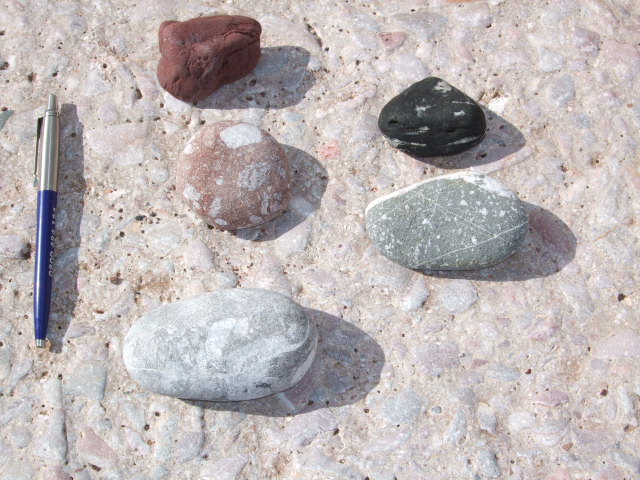There was once a walkway which led to the next beach but it has been removed and the beach officially closed in 1998.
Its closure is still an emotive local issue. You might see people on the beach but they shouldn’t be there. Later we will see the beach and its cliffs from the other side and find out the reasons for its closure.
Now look across the bay to the high pinkywhite cliffs which are made of the Devonian limestone that we learned about earlier. Look carefully at the layers of rocks and try to follow some of the lines.
You can see that the lines are not in parallel but go in all kinds of directions. Some have been upended and others have been folded over. These are all indications of the dramatic earth movements which not only raised these rocks out of the ocean but also created massive mountain ranges of which these rocks are the last remnants.
Now look at the almost-flat top of the cliff. If you follow the line of the cliff to the sea it passes over two large pointed rocks almost at sea level. Limestone was quarried here in the 1800s and those two pointed rocks mark the end of Long Quarry. They give you some idea of just how much limestone has been removed.
The limestone here is of very high quality so it was good for building. Thousands of tons were removed from here, put on to boats and shipped round to Torquay where they were used to build both prestigious and ordinary buildings.
If you’re in Torquay do take time to look at the buildings and structures made of limestone such as the sea wall along the promenade. You should be able to see lots of fossils.
Quarrying is really devastating to the landscape and has left a large part of the coast here as an industrial wasteland.
Also, during the quarrying operation large amounts of rock debris were tipped into the sea and the currents moved it gradually along the coast dumping it half a mile away on Oddicombe Beach, turning it white. We will see this later in the walk.
Quarrying has now ended and although it has left a scar on the landscape it has provided a new form of economic activity. Today adventure tourism has taken over providing serious rock climbing pitches on the walls.
Torquay is also popular for Stag and Hen weekends so groups come here to do the new extreme sport of coasteering which involves a combination of swimming, wading, climbing and scrambling around the intertidal zone.
Directions
From Anstey’s Cove, retrace your steps up the steep lane back towards the car park. When you reach the road at the top turn right. After about 100 metres look for a footpath on the right signposted “Babbacombe and St Marychurch over the Downs” and “Coast Path Walls Hill”. Go up the steps and follow the path uphill through the woods.
After about 300 metres you emerge on to an open grassy area. Stay on the right hand side with a fence and hedge on your right. Follow the fence round until you reach the barred gate and path down to Redgate Beach. Follow the fence a little further round the next corner and stop at the end (near a bench) where there is a good view down to the beach.
